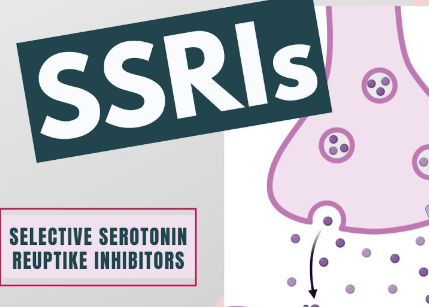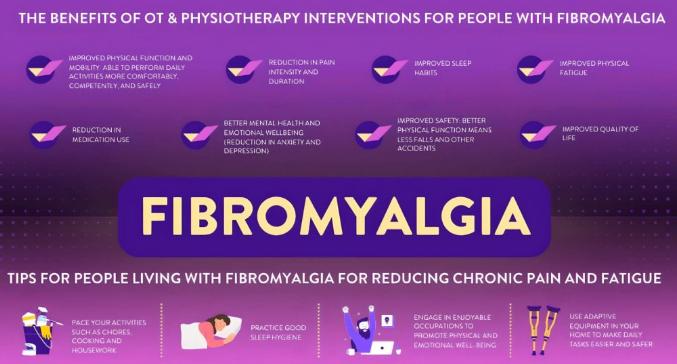Fibromyalgia is a complex and chronic condition characterized by widespread pain, fatigue, sleep disturbances, and cognitive issues. Its impact on daily life can be overwhelming, often accompanied by emotional challenges such as anxiety and depression. For many patients, selective serotonin reuptake inhibitors (SSRIs) are considered a potential treatment option. But how effective are SSRIs in managing fibromyalgia symptoms? This article explores the role of SSRIs in fibromyalgia treatment, their benefits, and potential limitations.
What are Selective Serotonin Reuptake Inhibitors (SSRIs)?
Selective serotonin reuptake inhibitors (SSRIs) are a class of medications commonly prescribed for mood disorders such as depression and anxiety. They work by increasing the levels of serotonin in the brain—a neurotransmitter that plays a key role in mood regulation, sleep, and pain perception.
Some commonly prescribed SSRIs include:
- Fluoxetine (Prozac)
- Sertraline (Zoloft)
- Citalopram (Celexa)
- Escitalopram (Lexapro)
- Paroxetine (Paxil)
Fibromyalgia: The Role of Serotonin
Serotonin dysregulation has been implicated in fibromyalgia. Low serotonin levels are thought to contribute to increased pain sensitivity, sleep disturbances, and mood disorders commonly seen in fibromyalgia patients. This connection makes SSRIs a logical choice for addressing certain fibromyalgia symptoms.
How SSRIs Help with Fibromyalgia Symptoms
While SSRIs are not a direct cure for fibromyalgia, they can help manage several symptoms. Here’s how:
1. Improvement in Mood and Mental Health
Depression and anxiety often coexist with fibromyalgia. SSRIs help regulate mood by increasing serotonin levels, reducing the severity of depressive symptoms, and improving overall emotional well-being.
2. Reduction in Pain Perception
Research suggests that serotonin plays a role in the body’s pain modulation system. By enhancing serotonin activity, SSRIs may reduce the brain’s sensitivity to pain signals, providing relief from the chronic pain associated with fibromyalgia.
3. Better Sleep Quality
Sleep disturbances, including non-restorative sleep, are common in fibromyalgia. SSRIs may indirectly improve sleep by alleviating anxiety and depression, which can contribute to sleep problems.
4. Cognitive Function
“Fibro fog,” a term used to describe cognitive difficulties in fibromyalgia, can be exacerbated by depression and anxiety. SSRIs help manage mood, which may in turn reduce cognitive impairments.
Evidence Supporting SSRIs in Fibromyalgia Treatment
Although SSRIs are not specifically approved for fibromyalgia, studies indicate they may benefit certain patients:
- Pain Reduction: Some research suggests that SSRIs like fluoxetine can reduce pain intensity in fibromyalgia patients.
- Improved Functionality: A study in Rheumatology International highlighted that SSRIs can improve patients’ quality of life by addressing both mood and pain symptoms.
- Combination Therapy: SSRIs are often more effective when combined with other medications (e.g., pregabalin or duloxetine) or non-pharmacological treatments like exercise and cognitive-behavioral therapy.
However, it’s important to note that the effectiveness of SSRIs varies widely among individuals, and not all fibromyalgia patients experience significant relief.
Limitations and Potential Side Effects of SSRIs
While SSRIs can be beneficial for fibromyalgia, they are not without limitations:
1. Limited Impact on Pain
While SSRIs can reduce the perception of pain for some patients, they are generally less effective for fibromyalgia pain compared to other medications, such as serotonin–norepinephrine reuptake inhibitors (SNRIs) or anticonvulsants.
2. Side Effects
Common side effects of SSRIs include:
- Nausea
- Insomnia or drowsiness
- Weight changes
- Sexual dysfunction
- Increased anxiety during the initial weeks of treatment
3. Not a Cure
SSRIs address symptoms but do not target the underlying mechanisms of fibromyalgia. For optimal results, they should be part of a comprehensive treatment plan.
4. Delayed Onset of Effect
It may take several weeks before patients notice improvements in mood or pain, which can be frustrating for those seeking immediate relief.
SSRIs vs Other Fibromyalgia Treatments
When comparing SSRIs to other treatments for fibromyalgia, it’s essential to consider individual needs:
1. SSRIs vs SNRIs
While SSRIs primarily target serotonin, SNRIs (e.g., duloxetine, milnacipran) influence both serotonin and norepinephrine. SNRIs are generally more effective for fibromyalgia pain but may have additional side effects.
2. SSRIs vs Anticonvulsants
Anticonvulsants like pregabalin and gabapentin are often prescribed for fibromyalgia pain. These drugs target nerve activity, while SSRIs primarily address mood and serotonin levels.
3. SSRIs vs Cognitive Behavioral Therapy (CBT)
CBT is a non-pharmacological approach that focuses on managing negative thought patterns and coping strategies. While SSRIs work chemically, CBT empowers patients through mental and emotional tools.
4. SSRIs vs Physical Therapy
Physical therapy addresses physical symptoms like muscle stiffness and mobility, complementing SSRIs by tackling a different aspect of fibromyalgia.
Tips for Using SSRIs in Fibromyalgia Treatment
If you and your healthcare provider decide that SSRIs are appropriate for your fibromyalgia, keep these tips in mind:
- Start Slow: Begin with a low dose to minimize side effects, and gradually increase as directed by your doctor.
- Be Patient: It may take 4-6 weeks to notice significant changes.
- Communicate: Report any side effects or lack of improvement to your healthcare provider.
- Combine with Other Treatments: Pair SSRIs with lifestyle changes, physical therapy, or other medications for a more holistic approach.
Conclusion: Are SSRIs Effective for Fibromyalgia?
Selective serotonin reuptake inhibitors (SSRIs) can be a valuable tool in managing fibromyalgia symptoms, particularly for patients experiencing depression, anxiety, or sleep disturbances. While their impact on pain may be modest compared to other treatments, they play a crucial role in improving mood and overall quality of life.
As with any treatment, the effectiveness of SSRIs varies from person to person. A tailored, multidisciplinary approach that combines SSRIs with other therapies may yield the best results. If you’re considering SSRIs for fibromyalgia, consult your healthcare provider to determine if they’re right for you.

Click Here to Visit the Store and find Much More….
For More Information Related to Fibromyalgia Visit below sites:
References:
Fibromyalgia Contact Us Directly
Click here to Contact us Directly on Inbox
Official Fibromyalgia Blogs
Click here to Get the latest Chronic illness Updates
Fibromyalgia Stores










